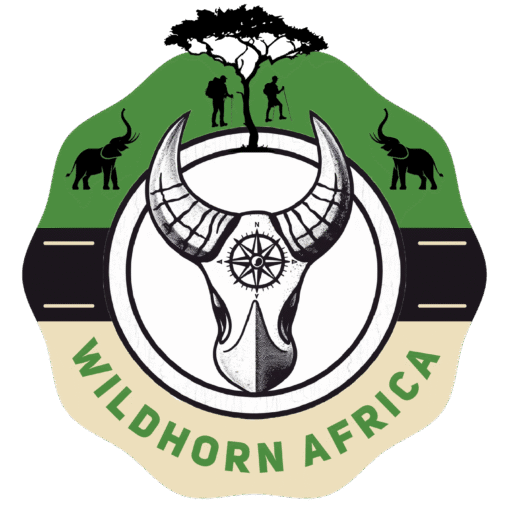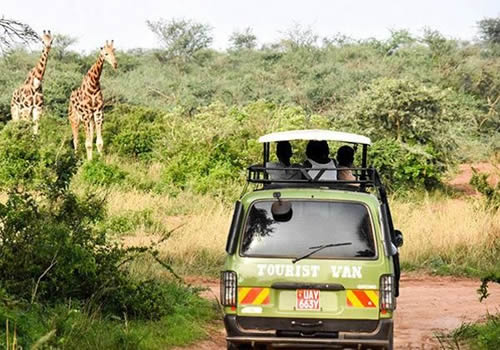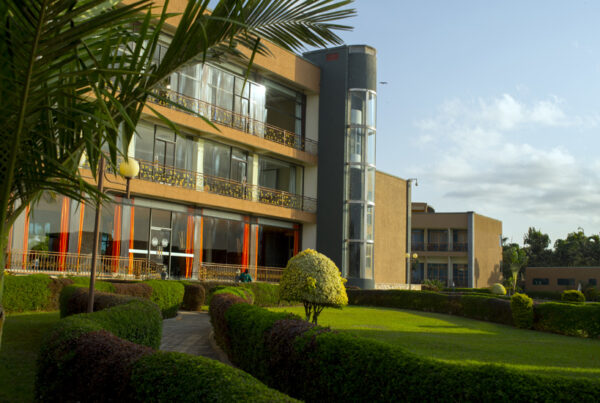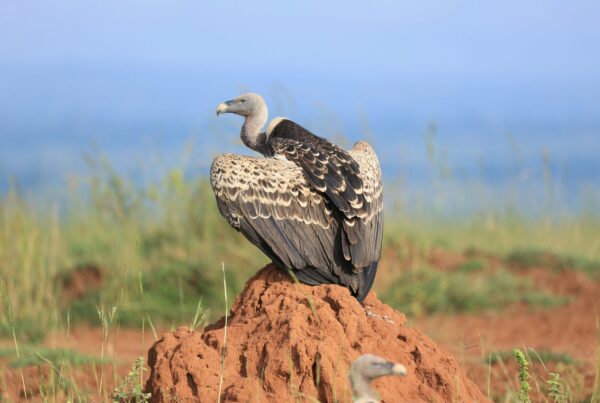Best Ways to Travel from Kampala to Uganda’s National Parks | WildHorn Africa
In the heart of East Africa lies a land so vibrant and alive that every sunrise feels like a new discovery. Uganda, the “Pearl of Africa,” is a country of breathtaking contrasts—lush rainforests, shimmering lakes, golden savannahs, and mist-covered mountains that cradle rare wildlife species found nowhere else on Earth. From the thunderous cascades of Murchison Falls to the ancient gorilla jungles of Bwindi Impenetrable Forest, Uganda’s national parks embody Africa in its purest form. But for every traveller planning a safari adventure, one vital question always arises: What’s the best way to travel from Kampala to Uganda’s national parks?
The answer is both fascinating and practical. Uganda’s capital, Kampala, serves as the gateway to adventure, connecting travellers to the country’s vast network of national parks scattered across its diverse landscapes. Whether you are drawn to the gorillas of the southwest, the lions of Queen Elizabeth, or the hippos of Murchison Falls, how you travel shapes not just your experience, but your understanding of Uganda’s rhythm and soul.
This article delves deep into the journey—unpacking the distances, travel options, hidden logistics, and the deeper experience that defines the road from Kampala to Uganda’s wild heart. It explores how to travel smart, safely, and sustainably, and why the journey itself becomes part of the adventure.
The Journey Begins: Kampala, the Heartbeat of Uganda
Kampala is not just the capital city; it is Uganda’s pulse, the point where every safari begins and ends. From the hills of Kololo to the shores of Lake Victoria, Kampala’s energy embodies both chaos and charm. Travellers find themselves immersed in a world where modern skyscrapers rise above centuries-old markets, and where traffic jams hum to the rhythm of boda-bodas darting through narrow streets.
Every national park journey starts here—whether you are travelling by road or air, Kampala is the launching pad. Its location in the central region of Uganda makes it a natural hub, connecting to major highways that lead north toward Murchison Falls, west toward Queen Elizabeth, and southwest toward Bwindi Impenetrable, Mgahinga, and Lake Mburo.
Choosing how to travel from Kampala depends on your budget, time, comfort level, and sense of adventure. Some travellers prefer the scenic overland drive that reveals Uganda’s countryside, while others opt for faster domestic flights that soar above the Rift Valley’s breathtaking scenery.
Understanding Uganda’s National Park Geography
Before choosing your travel method, it’s essential to grasp Uganda’s unique geography. The country hosts ten major national parks, each positioned in different ecological zones. From Kampala, the distances vary significantly, influencing how long your journey takes.
Murchison Falls National Park lies northwest, about 300 kilometers away. Queen Elizabeth National Park stretches westward near the Rwenzori Mountains, approximately 400 kilometers from Kampala. Bwindi Impenetrable National Park, home to Uganda’s mountain gorillas, is farther southwest, about 480 kilometers by road. To the east, Mount Elgon National Park sits along the Kenyan border, and to the north, Kidepo Valley National Park sprawls over 700 kilometers away in one of Africa’s most remote corners.
Each route offers its own rewards and challenges—scenic drives through tea plantations, rugged mountain roads, and glimpses of rural Uganda that few tourists ever see. The choice between road safaris and fly-in safaris often depends on the kind of experience one seeks: immersive and gradual or swift and luxurious.
Travelling by Road: The Scenic Safari Experience
Travelling by road from Kampala to Uganda’s national parks remains the most popular and immersive way to experience the country. Uganda’s road network has improved dramatically over the past two decades, with paved highways connecting most major towns and park entry points. Yet, the journey is as much about the experience as the destination itself.
A road safari allows travellers to witness Uganda’s landscapes unfold gradually—from bustling trading centers to quiet villages, from banana plantations to cattle fields stretching endlessly toward the horizon. The rhythm of the road offers intimate glimpses into daily life—children waving from schoolyards, women carrying baskets of fruit on their heads, and fishermen mending their nets by the roadside.
Professional tour companies such as WildHorn Africa typically organize comfortable 4×4 safari vehicles equipped for long journeys, with experienced driver-guides who double as storytellers of Uganda’s land and culture. These guides transform the trip into a moving classroom, pointing out bird species, explaining local customs, and narrating the country’s conservation story.
The Northern Route: Kampala to Murchison Falls National Park
The journey from Kampala to Murchison Falls National Park is among the most scenic and historically rich. Travellers depart northwest along the Kampala–Masindi–Paraa road, a route that spans roughly five to six hours depending on traffic and road conditions. Along the way, landscapes shift from dense forests to open savannah plains, offering a vivid prelude to the wilderness ahead.
The highlight, of course, is Murchison Falls itself—the point where the Nile River is forced through a narrow gorge before plunging 45 meters into the depths below. Travellers who choose the road route are rewarded with stops at Ziwa Rhino Sanctuary, where Uganda’s only rhinos roam freely, and at small towns where local markets bustle with life.
By the time one reaches Paraa or the park’s southern gate, the experience feels far more than transit—it becomes a journey through Uganda’s ecological and cultural diversity. The road is not just a connector; it is a storyteller.
The Western Route: Kampala to Queen Elizabeth National Park
From Kampala, the drive to Queen Elizabeth National Park unfolds westward through rolling hills and fertile landscapes. The journey takes about seven to eight hours, passing through Mubende, Fort Portal, and the foothills of the Rwenzori Mountains, famously known as the “Mountains of the Moon.”
This route is an adventure in itself, offering views of tea plantations shimmering under the sun, crater lakes that glisten like mirrors, and endless banana groves. Fort Portal, with its cool climate and charming colonial architecture, makes for an ideal stopover before continuing south toward Kasese and the Kazinga Channel.
Upon entering the park, travellers encounter Uganda’s most diverse wildlife territory—tree-climbing lions in Ishasha, elephants grazing along the Kazinga Channel, and hippos basking in the sun. Reaching Queen Elizabeth by road allows visitors to absorb Uganda’s changing landscape and appreciate the harmony between agriculture, culture, and conservation that defines the western region.
The Southwestern Route: Kampala to Bwindi Impenetrable National Park
For many travellers, the pilgrimage to Bwindi Impenetrable National Park is the ultimate safari dream—a journey to meet the world’s last remaining mountain gorillas. The drive from Kampala takes roughly nine to ten hours, stretching southwest through Masaka, Mbarara, and Kabale before ascending into the forested highlands near Rushaga, Nkuringo, or Buhoma, the park’s main trekking sectors.
While the distance may seem long, the experience is deeply rewarding. The road winds through Uganda’s lushest countryside, dotted with rolling hills, herds of Ankole cattle, and locals tending to tea plantations. Stops at the equator line in Kayabwe offer photo opportunities, while Lake Mburo National Park along the route makes for an excellent overnight stop.
As the altitude rises, the air cools, the mist thickens, and the scenery transforms into a patchwork of terraced hills and dense jungle. The approach to Bwindi feels like entering another world—an ancient realm where time slows and nature reigns supreme.
 The Northeastern Route: Kampala to Kidepo Valley National Park
The Northeastern Route: Kampala to Kidepo Valley National Park
Travelling to Kidepo Valley National Park from Kampala is a true expedition into Uganda’s wild frontier. The park lies in the remote Karamoja region, near the borders of South Sudan and Kenya, making it one of Africa’s last untouched wildernesses.
By road, the journey covers over 700 kilometers and can take up to twelve hours, depending on the chosen route—either through Gulu and Kitgum or via Soroti and Moroto. Despite its length, the road trip to Kidepo is a profound cultural and visual journey.
Travellers witness Uganda’s transformation from lush greenery to rugged semi-arid plains, encountering traditional Karimojong communities along the way. Their manyatta homesteads, adorned with cattle and spears, offer a glimpse into a lifestyle shaped by survival and tradition.
Arriving in Kidepo feels like reaching the edge of the world. The landscape opens into vast golden plains surrounded by mountains, where lions roam freely and ostriches stride gracefully across the horizon. For adventurers seeking raw beauty and authenticity, the road to Kidepo is incomparable.
Air Travel: The Luxurious and Time-Saving Alternative
For travellers seeking speed, comfort, and panoramic views, flying from Kampala (Entebbe Airport or Kajjansi Airstrip) to Uganda’s national parks offers a luxurious alternative. Domestic flights operated by local airlines such as Aerolink and Bar Aviation connect Kampala to key destinations like Kihihi (for Bwindi), Kasese (for Queen Elizabeth), Pakuba (for Murchison Falls), and Apoka (for Kidepo).
Flights typically last between one to two hours, drastically reducing travel time while providing breathtaking aerial perspectives of Uganda’s terrain—the serpentine Nile, crater lakes, and vast savannahs spreading toward the horizon.
Upon landing, travellers are transferred by 4×4 vehicles to their lodges or park gates, often in under an hour. This combination of air and ground travel provides both convenience and exclusivity, appealing to those with limited time or those seeking a premium safari experience.
Comparing Road and Air: The Essence of Choice
The decision between travelling by road or air is not merely logistical; it reflects the traveller’s personality and purpose. Road travel offers immersion—a gradual connection to the landscape, people, and rhythm of Uganda. It rewards patience with depth.
Air travel, in contrast, offers efficiency—allowing more time within the parks for exploration, photography, and relaxation. It suits luxury travellers, families, and photographers who prioritize time and comfort.
Ultimately, the best journeys often combine both: flying to one park and driving back to Kampala through another route. This hybrid approach maximizes experience while minimizing fatigue.
The Experience Beyond Travel: The Soul of the Journey
No matter the chosen mode of transport, the journey from Kampala to Uganda’s national parks is far more than movement from point A to point B. It is a sensory odyssey—a blend of sounds, scents, and stories that reveal Uganda’s soul.
The road hums with life; every mile carries echoes of laughter, music, and the distant rhythm of drums. Villages flash by like chapters in a living storybook, each with its character and charm. Farmers wave cheerfully as safari vehicles pass, and children shout “Mzungu!” with unfiltered joy.
By air, the feeling is different but equally poetic. The sight of the Nile winding through the landscape, of forests giving way to savannah, evokes awe. Uganda’s scale and beauty become tangible in a single sweeping view—a reminder of how vast and interconnected its ecosystems truly are.
Safety, Comfort, and Practical Tips for Travellers
Uganda is one of East Africa’s most welcoming and traveller-friendly nations, yet responsible planning enhances every experience. Road conditions can vary, and weather may influence travel times. During the rainy seasons, certain park roads become muddy and require skilled driving. Travelling with professional safari companies ensures safety and reliability.
Modern vehicles equipped with air conditioning, pop-up roofs, and charging ports make long drives comfortable. Most routes have rest stops, restaurants, and fuel stations at regular intervals. Travellers are advised to start early in the morning to avoid heavy traffic departing Kampala.
For air travel, it is recommended to book flights through certified operators and confirm schedules, as domestic flights sometimes depend on weather conditions and passenger numbers.
Sustainability: Travelling Responsibly Across Uganda
The beauty of travelling in Uganda lies not just in the scenery but in the awareness that every journey can help preserve it. Responsible travellers choose operators who uphold eco-conscious values, minimize environmental footprints, and invest in local communities.
By travelling with sustainable companies like WildHorn Africa, travellers ensure that every mile supports conservation, education, and community empowerment. From carbon-offset programs to ethical wildlife encounters, responsible travel transforms tourism from consumption into contribution.
The Hidden Value of the Journey
The true magic of travelling from Kampala to Uganda’s national parks lies in the transformation that occurs along the way. The journey slows the mind, heightens the senses, and deepens the appreciation for nature’s grandeur. It bridges the gap between the modern city and the untamed wilderness, reminding travellers that the two worlds are not separate but connected by the same land and spirit.
Each turn on Uganda’s roads or flight over its landscapes reveals a story—the story of resilience, coexistence, and natural wonder. It is in these moments that travellers understand why Uganda is not just a destination but a living, breathing experience.
The Call to Explore
Every traveller who sets out from Kampala embarks on more than a safari. They embark on a pilgrimage into nature’s soul—a journey that reveals both the beauty of the land and the humility of being part of something larger than oneself.
Whether driving across golden plains or flying above misty forests, the best way to travel from Kampala to Uganda’s national parks is the one that resonates with your heart. For some, it will be the thrill of the open road; for others, the elegance of the skies. But for all, it is a journey that defines what true exploration means.
And when that adventure calls, let it be guided by experts who know the land intimately and care for it deeply. Choose to book your Africa tours and safaris with WildHorn Africa, where every journey is crafted with purpose, every route is chosen with passion, and every mile travelled helps protect Uganda’s wild legacy for generations to come.





 WildHorn Africa – Authentic and unforgettable tours across Africa, guided by local experts who know the land, wildlife, and culture best.
WildHorn Africa – Authentic and unforgettable tours across Africa, guided by local experts who know the land, wildlife, and culture best.


